Swipe Up
How to Select a Badminton Racket? That's Just Right
Pinkey Sharma |
Badminton |
2024-09-21 |
null mins read

Table of Contents
Hello, future badminton stars! Are you ready to pick out the perfect badminton racket that will have you smashing your way to victory? A lot could depend on the right choice of racket. In this blog, we will help you with everything you might need to know regarding how to select a badminton racket and how to choose a badminton racket so that you can give your best performance and enjoy it to the fullest!
What Makes a Great Badminton Racket
A badminton racket is not just a stick and some strings. It's part of your arsenal when playing the game. A good racket should feel comfortable, help you play effectively, and match your style of play. But how do you find one that's just right for you? Let's break down the important features you need to consider.
1. Weight of the Racket
The weight of your racket is one important factor in playing the game. Different weights have different benefits. Some of the benefits associated with different weights include:
A) Lightweight Rackets: These varieties of rackets weigh in the range of 70 to 85 grams. They are mainly useful for players who will require quick reflexes and fast gameplay. Lightweight rackets are quiet in their senses and are very fit for beginners and juniors who need to work their way up to agility and coordination. A lightweight racket will reduce stress and a load on your wrist and arm while practicing and help develop skills easily.
B) Middle-Weight Rackets: rackets whose weight lies in the bracket of 85–90 grams. They offer a perfect balance in terms of feel and are nice for those players who look up to both power and control. Intermediate players who strive to improve their skills and want a racket that can provide flexibility would find middle-weight rackets perfect.
C) Heavyweight Rackets: These are the over 90-gramme rackets, and they tend to be heavier. These are rackets that advanced players prefer and who can use the extra weight to full effect by hitting harder shots. They provide more stability and control; therefore, this category is most suitable for players that prefer or depend on strong smashes and aggressive play.

2. Racket Balance
This is basically the feel of the racket while playing.
A) Head-Heavy Rackets: These rackets have additional weight towards the head, therefore giving you extra power on your shots. Suitable for players who like a powerful smash and long clear. The bigger force can be generated with an extra load on the head, but for my taste, it feels a bit less agile.
B) Head-Light Rackets: These are rackets with more weight located towards the shaft of the head. These categories of rackets are lighter and therefore provide a more massive drive behind the shuttles. Players also get enhanced maneuverability and speed. Headlight rackets are right for players who depend on quick reflexes with greater control. With a headlight racket, rapid movements can easily be achieved right on any corner of the court.
C) Even-Balanced Rackets: This kind of racket will provide quite a mix between raw power and control. Basically, these are evenly weighted and produce a very flexible playing experience. These are ideal for use by players who desire a mix of power and agility. Therefore, they are quite ideal for all-round play.
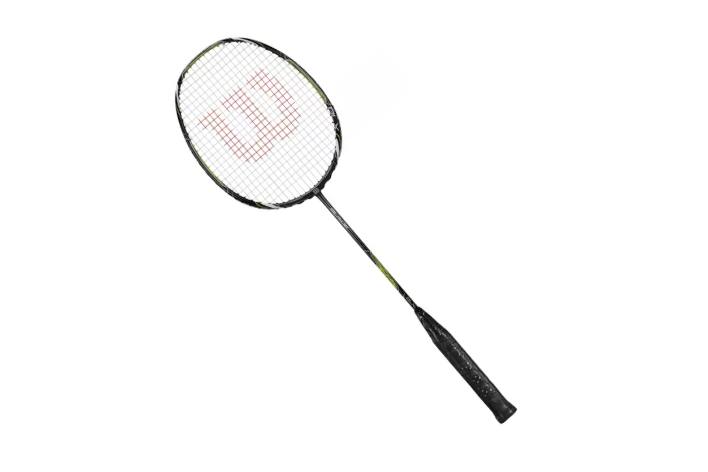
3. Racket Material
The racket material goes on to dictate the performance, the durability, and the cost of the racket:
A) Aluminum rackets: These rackets are relatively more affordable and durable and are perfect for novices. So, they can be handled with a lot of wear and tear. They tend to be a bit on the heavier side and are rather inflexible when compared to other materials. These rackets can be a good choice for kids just starting out who would need something sturdy that could handle much abuse.
B) Graphite Rackets: These are lightweight and flexible rackets that offer you better performance and control. The feel and response are responsible for their acceptance by intermediate and professional players. These are rackets made with graphite to enhance power and precision, making them the preferred racket for improving players.
C) Composite Rackets: These strings are generally made out of a composite mix of materials with the aim of achieving a string that can strike the right balance between power, control, and durability. They will be good for any serious player looking for a racket that can deliver a balanced performance in play. Composite rackets are made to offer a good mix of attributes, and therefore they are versatile for use in different playing styles.
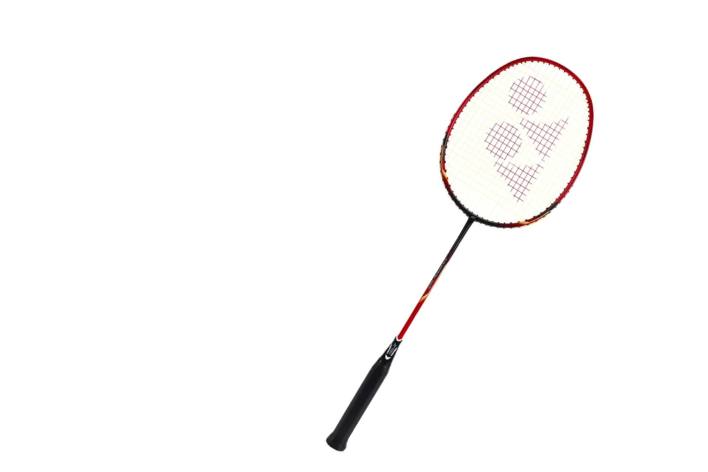
4. Grip Size
The grip size affects how comfortable and
A) G1-G3 Small Grip: It is perfect for someone with small hands. A smaller grip allows the player to feel the racket and have control over it. It allows the player to easily move the racket, so it will work for small juniors and people with small hands.
B) Medium Grip (G4-G5): This is the size of grip that most players will find comfortable. It gives a really nice feel for overall control but yet has pop if looking for power. Sort of an all-purpose, middle-of-the-road grip size that most players will find satisfaction in.
C) Large Grip G6: For the large-handed player. A larger grip gives more power but less maneuverability. An appropriate grip size should not strain when holding it and will support performance effectively.
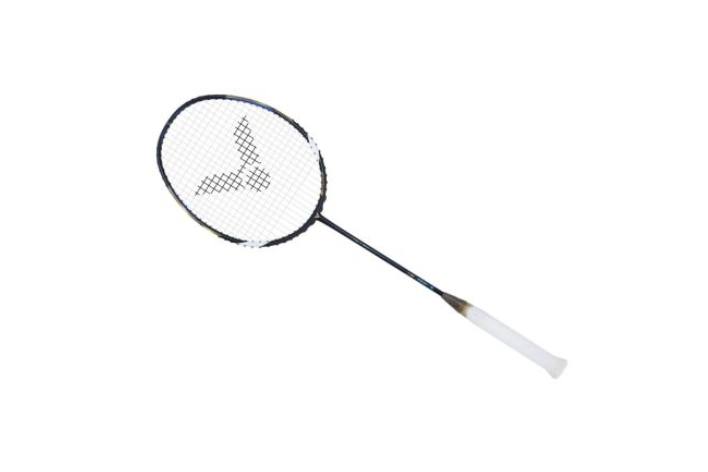
5. String Tension
The tension refers to how tight or loose the racket holds the shuttlecock. Low tension is soft, with less power. This way, it is gentler on the arm, and one can find power with less effort. Low-tension strings are best for beginners who need all the help in generating power and control.
A) Medium Tension: This delivers a balanced dose of power and control. It is the choice of most intermediate players who would want a racket that turns out stable as well as responsive.
B) High Tension: Delivers more control as well as precision. It demands more skills to have the ability to control such a racket, but it determines how good your accuracy and consistency will become in your shots. The high-tension strings are favored by advanced players who can handle the extra tension.
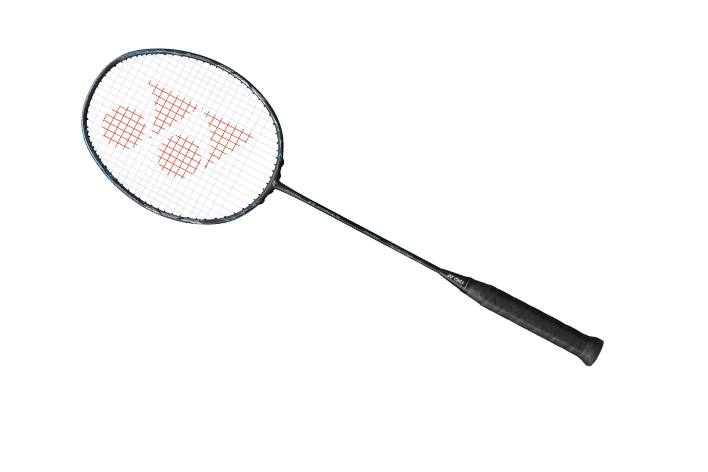
How to Choose the Right Badminton Racket for Yourself
Now, with the features of a badminton racket that you know, let's sum it up:
1. Look at Your Playing Style
Now consider the liking in the playing style:
Aggressive Players: In case you love smashing and powerful kinds of shots, you want a head-heavy racket, meaning the heaviness to be a bit on the head side. This, in return, will help you provide the power you want for those potent smashes and clears.
Defensive Players: If you like a defensive game style, you would have to be more into speed and quick reflexes, so a head-light racket with light weight might suit you better. It will make you quicker, with quick responses to every shot from your opponent.
All-rounders have an even mix of power and control: An evenly balanced racket with medium weight should suit players who like to mix up their strategies so that versatility is possible.
If possible, hit with a variety of rackets before you purchase one. Most sporting goods stores have demo rackets available to hit with. Hold them, swing them, and get a feel for them. Take note of how the weight, balance, and grip size affect your play.
3. Consider Your Budget
Racket prices may vary from very expensive to budget-friendly. While one will feel like going for the most expensive racket, there are great rackets in almost every price range. Go for a racket that will fit into your pocket and offer you exactly what you need.
In case you're still not sure, seek advice from a coach, an experienced player, or an expert at the sports store. They can help one choose a racket based on one's level of expertise, the style of play, and personal preferences.
5.Look at Online Reviews
Reviews by fellow players are very informative. Look for reviews highlighting what you would consider relevant to your requirements in a racket, be it comfort, durability, or high performance.
Famous Badminton Rackets to Consider.
Here are some of the most popular badminton rackets receiving high recommendations from players:
1. Yonex Voltric Z-Force II
The very popular Yonex Voltric Z-Force II rackets are famously known for powerful smashes and great control over the game. This head-heavy balance of the racket can bring excellent stability and is thus highly recommended for a kind of player that loves aggressive play.
2. Li-Ning Turbo Charging 75
Li-Ning turbo charging
75: Due to the focus on speed and maneuvering, players prefer this racquet for better motivation towards fast-reacting games; it's head-light.
3. Wilson Blade
Its all-round performance has shot the Wilson Blade to the top of the popularity list. Available in an all-balanced ration for power and control, this one matches those with all-round playing skills.
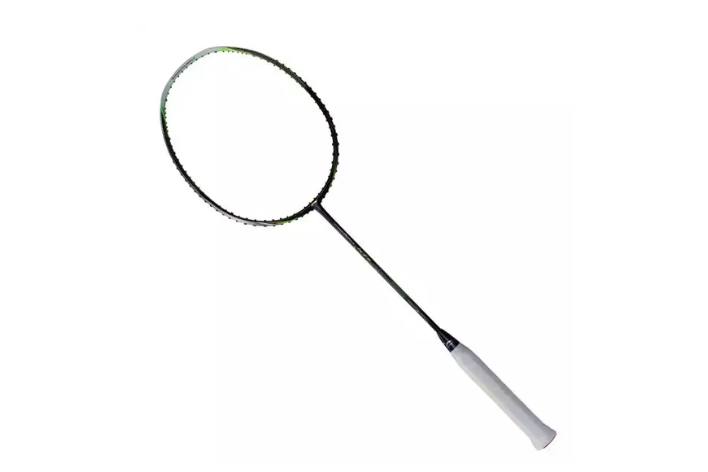
Fun Facts About Badminton Rackets
Here are some fun facts about badminton rackets that you might enjoy reading:
Evolution of Rackets:
There has been a remarkable evolution of badminton rackets from their very first wooden make. Since ancient times, modern rackets have been made out of aerospace-grade graphite and many composite materials, increasing their performance and lifespan.
Customization:
Many players customize their rackets through a process that includes tensioning the strings or fitting the grip with some accessories. Customisation helps players tune the rackets according to their likings and their playing style.
Famous Players' Rackets:
Many pro players have their rackets' signature designs that are meant only for them. Such rackets may have special designs coupled with advanced technology to suit playing styles.
Conclusion
Hats off to all you badminton lovers! Now you are aware of how to select a badminton racket and how to choose a badminton racket. So go ahead and get hold of the one who will be your bud in the sport. Remember the different categories and the available weight, balance factor, material used, grip size, and string tension available with your choice.
Armed with the right racket, you'll be gunning for an improved game and some really great fun on the court. Whether you're smashing powerful shots or making quick saves, the perfect racket can make all the difference.
FAQ’s
1. How to choose a good racket for badminton?
A good badminton racket would entail the following features: weight, balance, and grip size. One would have a light racket weighing close to 80-85 grams and is easy to handle for those not professional in the game. Balanced rackets would provide an excellent control for the game. The grip size is what counts, and one must select that which feels good and comfortable. You will play with it.
2. How can you tell the quality of a badminton racket?
Quality rackets may be identified in terms of materials, construction, and reputation from brand sources. Quality rackets are made out of durable materials like carbon fiber or aluminum. Experienced racket manufacturers would always prefer brands with good reputations so good craftsmanship is present. Another key area will be to check on customer reviews regarding performance and durability.
3. How do you judge a badminton racket?
A good or bad badminton racket is decided by its weight, balance point, the tension of the strings, and its flexibility. For it to be considered good, a racket should not be very uncomfortable during play and should not restrict swings and shots. The only best way of judging how well it performs in the game is by some testing of the racket with a few rallies.
4. How do I choose a good badminton set?
A decent badminton set consists of a fine-quality racket, durable shuttlecocks, and a good carrying case. It should also possess rackets suitable to the participants' weight and grip size. The badminton set also depends upon the skill level of the people: different sets for beginners as against those trained in this sport.
Thanks for joining us on this exciting journey to finding your ideal badminton racket. Please share this blog with your friends, keep practicing, and stay active. Until next time, happy playing, and enjoy every smash and serve!
Comments(0)
Admissions Open for 2025-26
Categories
Academics
Arts
Astronomy
Badminton
Basketball
CBSE Board
Chess
Child Learning
Children's Literature
Civics
Coding
Creativity
Cricket
Cycling
Dance
Days and Festival
English
Entertainment
Environmental Awareness
Famous Personalities
Featured Blogs
Football
Full Form
Geography
Health and Nutrition
Hindi
Hockey
Horticulture
Maths
Music
Parents Corner
Public Speaking
QnA
Recommended
Robotics
Science
Scientist and Their Inventions
Social Skills
Sports
Swimming
Taekwondo
Teacher's Corner
Theatre
Recent Blogs
Top 10 Indian Badminton Players [Legendary Players of Badminton]
What Are the Rules of Playing Badminton?
What Is the Size of a Badminton Court?
A guide to badminton Singles Court Rules and Regulations
What is the Badminton Doubles Service Rule?
Who Invented Badminton and When?
Understanding the History of the Badminton
CBSE Schools In Popular Cities
CBSE Schools in Bangalore
CBSE Schools in Mumbai
CBSE Schools in Pune
CBSE Schools in Hyderabad
CBSE Schools in Chennai
CBSE Schools in Gurgaon
CBSE Schools in Kolkata
CBSE Schools in Indore
CBSE Schools in Sonipat
CBSE Schools in Delhi
CBSE Schools in Rohtak
CBSE Schools in Bhopal
CBSE Schools in Aurangabad
CBSE Schools in Jabalpur
CBSE Schools in Jaipur
CBSE Schools in Jodhpur
CBSE Schools in Nagpur
CBSE Schools in Ahmednagar
CBSE School In Tumkur


Speak Your Mind
Save my name, email and website in this browser for next time I comment